Top 10: Knowledge Management software
Updated: July 31, 2023
Knowledge Management software is a specialized tool that enables organizations to efficiently capture, organize, and share knowledge and information within the company. This software centralizes knowledge from various sources, such as documents, manuals, databases, and employee expertise, making it easily accessible to employees. Knowledge Management software often includes features like document management, content categorization, search capabilities, and collaboration tools to foster knowledge sharing and collaboration among teams. By leveraging this software, businesses can improve information sharing, reduce duplication of efforts, and enhance decision-making processes. Knowledge Management software is particularly valuable in facilitating employee onboarding, training, and continuous learning, ensuring that valuable knowledge is preserved and utilized effectively throughout the organization.
Some of the most popular knowledge management software options are listed below.
See also: Top 10 ECM software
See also: Top 10 ECM software
2022. Sana raises $34M for its AI-based knowledge management and learning platform for workplaces

Sana Labs, a company specializing in AI-based solutions, has successfully raised $34 million. Sana Labs offers a unique platform that combines knowledge management, enterprise search, and e-learning capabilities, setting it apart from other products in the market. The core concept of Sana Labs revolves around helping individuals effectively manage information at work and utilize it as a valuable resource for organizational e-learning initiatives. The platform incorporates an AI engine that seamlessly integrates with various workplace applications, including Salesforce, email systems, Notion, Github, Slack, Trello, Asana, and more. This comprehensive approach allows Sana Labs to capture, source, store, and facilitate communication across multiple platforms, enabling efficient knowledge management, enterprise search functionalities, and seamless e-learning experiences within organizations. By bridging the gaps between these three domains, Sana Labs empowers businesses to optimize information utilization and foster continuous learning within their workforce. The significant funding raised by Sana Labs underscores the growing demand for advanced AI-powered solutions in the knowledge management and e-learning sectors.
2021. Zoho unveiled Zoho Learn - knowledge and learning management platform

Zoho Learn introduces an innovative all-in-one solution for knowledge and learning management, enabling organizations to effortlessly create, manage, and share internal knowledge, curate comprehensive training programs, assess learner comprehension, and analyze their progress with training materials. With Zoho Learn, you can effectively organize knowledge, foster knowledge sharing among peers, develop engaging courses using the intuitive drag and drop course builder, construct quizzes with a diverse range of question and answer formats, grade learners' performance, and monitor individual completion rates to gauge their overall engagement in the courses. Additionally, learners can contribute their expertise and participate in lesson-based discussion boards. The pricing model is based on the number of users within your organization, starting at $1 per user per month, ensuring cost-effectiveness and scalability.
2021. Scribe launches knowledge-capturing software that gets employees on the same page
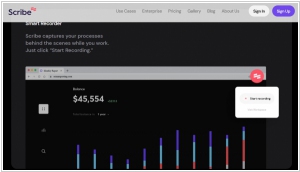
Employees frequently join and leave organizations, often taking their valuable knowledge along with them. In addition, there are instances when only a few employees possess expertise in a specific task but lack the time to provide extensive training to others. This is where Scribe comes into play. Its software captures and converts movements and clicks into a comprehensive, editable, and shareable step-by-step guide complete with screenshots and text, all within a minute. The information can be recorded using a Chrome extension or desktop app and stored in a repository until it is required. Scribe has gained popularity worldwide, with over 10,000 organizations utilizing it as a means to share knowledge on various tasks. Notably, Scribe's user base extends beyond the initial target audience of Smith and Podolny, encompassing government entities, schools, and other organizations.
2021. SaaS knowledge management service Typed closes $2.5M seed round
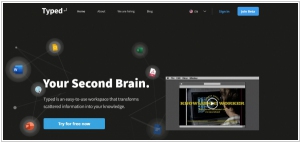
Business Canvas, the South Korean document management SaaS company responsible for Typed, has successfully raised $2.5 million in seed funding. The capital injection will be primarily utilized to expedite product development and facilitate the global launch of an open beta for their AI-powered document management platform. Business Canvas aims to address the common challenge faced by knowledge workers and writers—the overwhelming abundance of information that often leads to spending more time on research and file organization rather than actual content creation. Typed, through its intelligently networked system that tracks and organizes files based on user interactions, consolidates knowledge from various websites and applications, offering a user-friendly and efficient digital workspace. The platform simplifies the process, allowing users to focus on their content output while seamlessly managing their information sources.
2021. “Knowledge-as-a-service” platform Lynk lands funding from UBS’ Investment Bank – TechCrunch
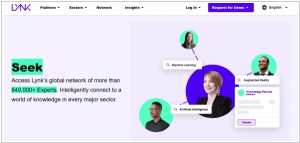
"Knowledge-as-a-service" platform Lynk has successfully raised $29 million in Series B funding. With a vast network of over 840,000 experts, Lynk leverages machine learning algorithms to facilitate precise matching between users and experts on its platform. The primary objective of Lynk is to connect clients, which include financial institutions and government organizations, with individuals they may not typically encounter through conventional online channels or traditional consultancy services. By harnessing the power of technology and expert networks, Lynk aims to provide valuable insights and foster fruitful collaborations for its clients across various industries.
2020. Onna, the ‘knowledge integration platform’ for workplace apps, raises $27M
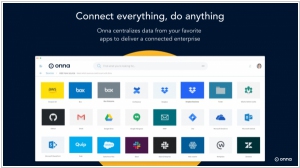
Onna, a "knowledge integration platform" (KIP) that boasts support from Dropbox and Slack, has recently raised $27 million in Series B funding. Since its establishment in 2015, Onna, headquartered in Barcelona and New York, has established integration capabilities with a wide range of workplace applications, including Slack, Dropbox, G Suite, Microsoft 365, and Salesforce. Its primary objective is to unlock the valuable knowledge stored within an organization's diverse cloud and on-premise software. A KIP such as Onna finds applications in areas such as compliance, governance, archiving, and eDiscovery. By unifying data from communication apps, cloud storage, and HR platforms, the platform aims to make this information searchable while maintaining robust security measures and preserving existing permissions and privacy.
2018. TheBrain 9 gets new interface, attachment previews, timeline and mind mapping view
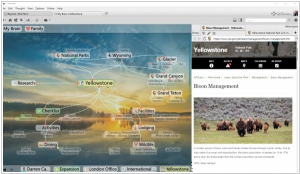
TheBrain Technologies has unveiled the latest version of its dynamic visualization and knowledge management software, TheBrain 9. This release introduces a range of new features, including a brand-new native user interface that allows for seamless scaling to accommodate millions of objects. With a more powerful and robust backend, TheBrain 9 delivers faster startup times, improved responsiveness, and enhanced scalability. The software has been completely rewritten as a native application, optimizing it for specific features on Windows, macOS, iOS, and Android platforms. The updated version introduces a highly versatile timeline with a zooming interface, enabling smooth transitions from single-day to multi-year views. Events can be synchronized with Google Calendar and directly associated with thoughts and links. The advanced content display functionality offers built-in viewing of attachments, enhancing the overall user experience. The new Notes editor provides a clear separation between content and presentation, facilitating flexible idea capture that can be easily styled. Additionally, the mind map view dynamically generates a traditional mind map display from any starting point within a Brain, granting users convenient one-click access to a multitude of topic-specific notes, files, web pages, and other attached content.
2010. OTRS ITSM 2.0 - the first open-source ITIL certified solution

Many companies opt to use OTRS as their helpdesk system for two main reasons: it is both free and highly compatible with website and email integration. Recently, OTRS has expanded its reach to include sysadmins and IT departments, even within larger organizations. The latest release, OTRS ITSM 2.0, has received official certification from PinkVERIFY, an expert company, for its compatibility with six ITIL v3 processes. ITIL serves as a repository of recommendations and best practices for effective IT infrastructure management. OTRS ITSM has been available for approximately three years, offering features such as incident management, problem management, configuration management, SLA management, and knowledge management. The new version, 2.0, introduces change management capabilities, allowing users to oversee processes like setting up new employees with laptops, implementing new systems and equipment, and upgrading licensed software through OTRS ITSM.
2009. Social Software leaders: Jive, SocialText and NewsGator

Social Software adopts consumer web achievements (wikis, blogs, profiles, tags, ratings, social connections, people search, micro-blogging) in the enterprise environment. Of course, today almost all software vendors say that their software provides social computing, but in most cases it's only PR pitches and their software is not really social. At the same time there are few "native social software" solutions, that provide a social layer for company intranet and really enable it to achieve the social software objectives: create enterprise-wide community and improve collaboration. The most successful on this market are 3 solutions: Jive SBS, SocialText and NewsGator Social Sites. ***
2009. Lithium wants to play Social CRM game
Lithium, the enterprise community platform, is undergoing a transformation to become a comprehensive social CRM solution for businesses. Lithium's latest suite embraces the dominance of Facebook and Twitter in the web space, expanding beyond its previous forum-centric approach. While still maintaining its role as a content repository and community site, this is now encompassed within the "tribal knowledge base," which resembles a wiki rather than solely relying on forums. Moreover, Lithium now serves as a bridge connecting the consumer web, your community, and your company's CRM. It seamlessly integrates with popular CRMs like Salesforce.com and aggregates blog posts and Twitter search results. For Twitter integration, the widget can be embedded on any webpage, and specific keywords can be set on a per-page basis. When there's a relevant discussion happening, a tweet can initiate a forum thread.
2008. Socialcast brings knowledge sharing to the Enterprise
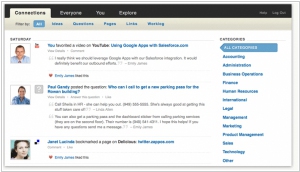
We greatly appreciate the sense of community and the ease of accessing knowledge with just a few words. We believe that such knowledge sharing and interaction can significantly enhance communication within organizations. Socialcast shares this belief and has developed a hosted team messaging service specifically designed to facilitate this type of collaboration. This service enables companies to consolidate information and promote communication and collaboration within their organization, similar to how we engage externally using platforms like Twitter. Each user can create a personalized profile and seamlessly share information, status updates, documents, links, and more with their colleagues. The user profiles are highly customizable, allowing individuals to include custom questions and even links to other accounts such as last.fm, Digg, LinkedIn, or personal blogs. The administration panel offers complete control and flexibility to tailor these features according to the specific needs of your deployment.
2008. Salesforce wants to be a force in knowledge management too…
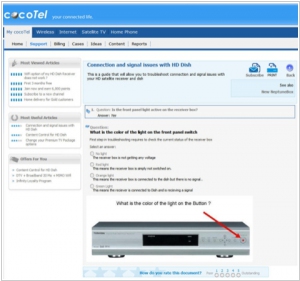
Salesforce initially established itself in the customer relationship management (CRM) space, offering a solution to streamline sales processes within companies. However, knowledge management encompasses more than just sales processes, making Salesforce's recent acquisition of InStranet a logical move. InStranet provides a powerful tool called Dimensions, which has immense potential in effectively managing the ever-increasing volume of information present in businesses. Dimensions serves as a solution to organize and categorize a company's knowledge base. When a customer seeks specific information, InStranet's Dimensions can efficiently sift through vast amounts of irrelevant data and present only the relevant information. This capability enables businesses to accumulate extensive amounts of data, with the assurance that the information remains easily accessible when needed.

